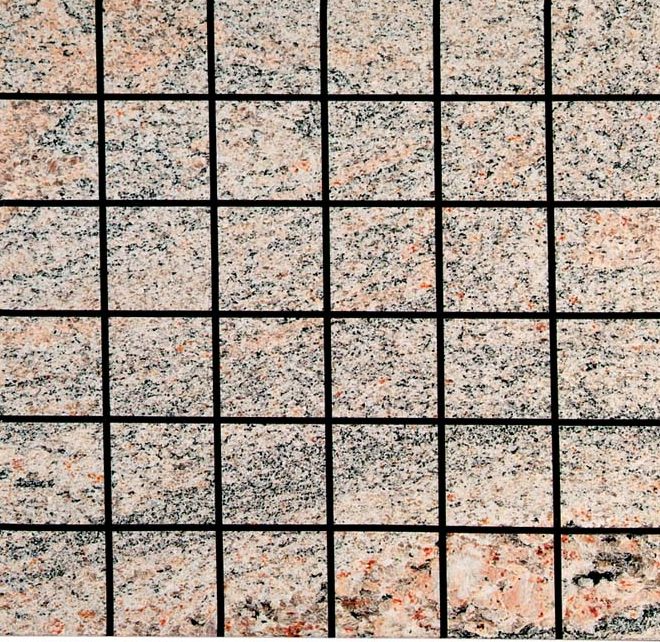Natural Stone
Stone tile is available in a variety of types, sizes, and finishes and can be used to create a look that never goes out of style.
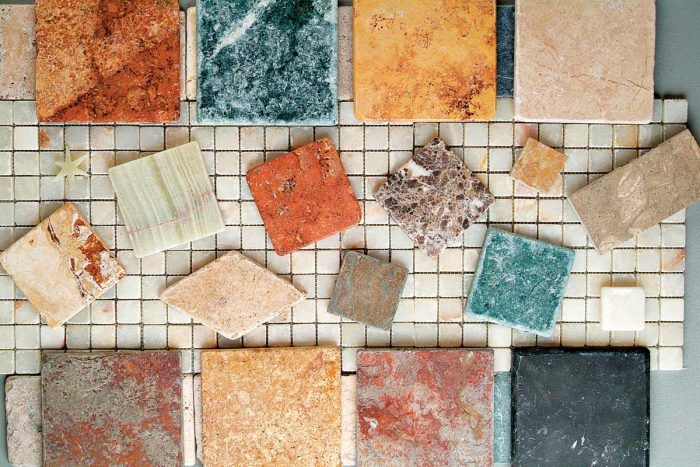
Years ago, if you wanted a natural stone floor in your home, you had to hire a skilled mason, who took random slabs of natural stone straight from the quarry and transformed them into a clean and elegant tile installation. These days, natural stone is readily available already cut, sized, and polished into tiles that any competent DIYer can install using the methods described in this guide.
Several types of natural stone are available in tile form, including marble, travertine, limestone, slate, and granite. Each has its own range of colors and characteristic patterns and properties, as detailed in the sections that follow. Stone tiles come with either a polished, honed, or tumbled finish. Polished stone has a mirror-like surface that looks elegant and refined, but it tends to show scratches and wear. Honed stone has been ground to a matte surface, giving it a contemporary look that can also be used in traditional settings. Tumbled stone has a rough, pitted appearance that’s more appropriate for a rustic tile design. The matte surface of tumbled stone doesn’t show scratches or wear readily, but it tends to stain a bit easier than polished stone.
There are a few important things to consider before choosing natural stone for your project. (1) You’ll need a tile saw to cut stone tiles to fit your installation. (2) Trim pieces (quarter-round, bullnose) are generally not available for stone tile. To create trim pieces, you’ll need to purchase a stone-polishing and grinding kit or contact a stone fabricator. (3) Stone tiles require regular cleaning and maintenance, including periodic resealing, to keep them looking good. (4) Since stone is a product of nature, tiles can vary considerably in color and pattern. Some people love this natural variation. If you like stone but want a more consistent look, consider choosing faux stone tiles.
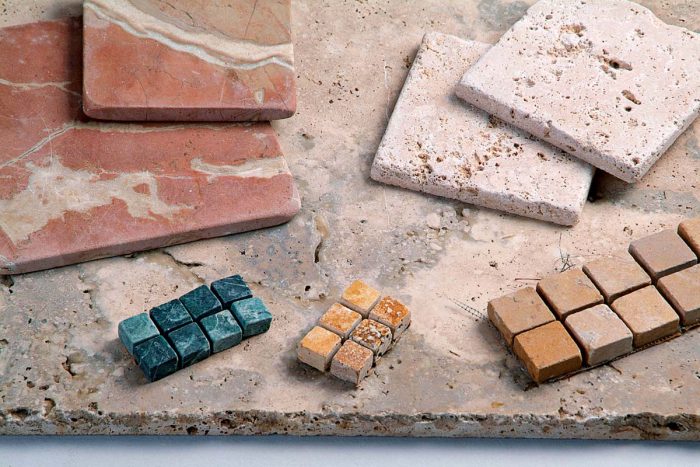
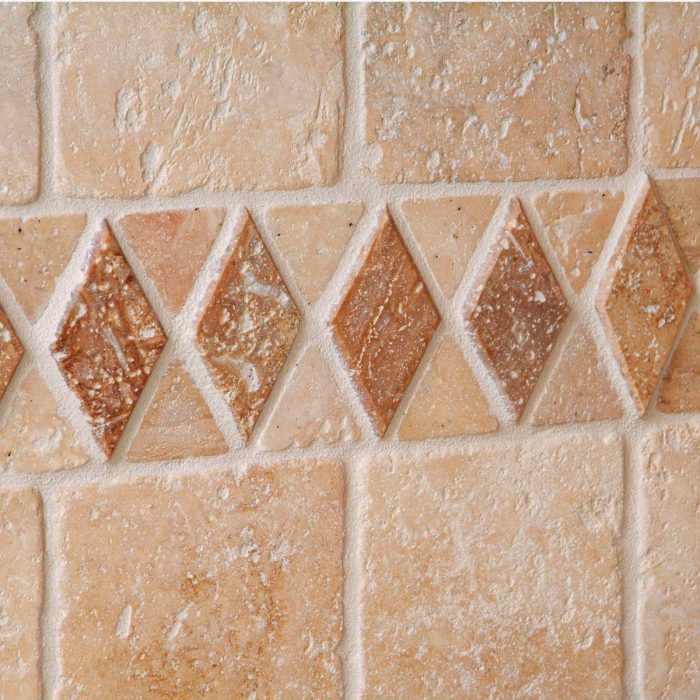
Marble
Marble is a soft stone with distinct patterns of colored veins that can give an installation an elegant, classic look. Colors range from white to black with just about every color in between. Due to its reactive nature with any acidic liquids, such as lemon or vinegar, marble is not a good choice for kitchen counters and food-preparation areas. Also, water spots can leave light mineral deposits, especially on polished marble surfaces.
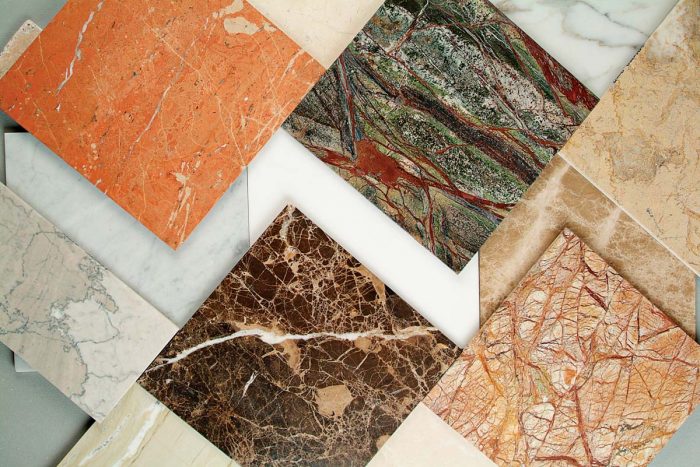
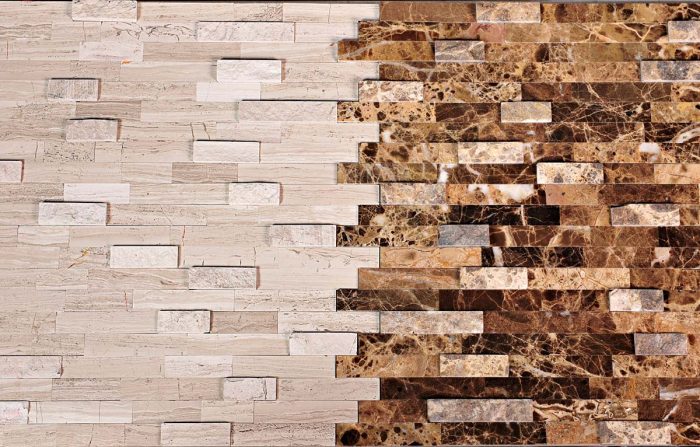
Travertine
Imported from all over the world, travertine stone comes in mostly beige to gray tones. The surface of this sedimentary stone contains cavities that can hold dirt. For smoother, easier-to-clean tiles, you can either fill the surface cavities with grout or buy tiles that are prefilled with color-matched epoxy. Travertine is not a great choice for countertops, as acids such as lemon juice can etch the surface of the tile. Prices of this tile are wide ranging, reflecting the quality of the material; less expensive prefilled tiles often have vast areas of featureless epoxy; buy higher quality travertine for a richer, more natural appearance.
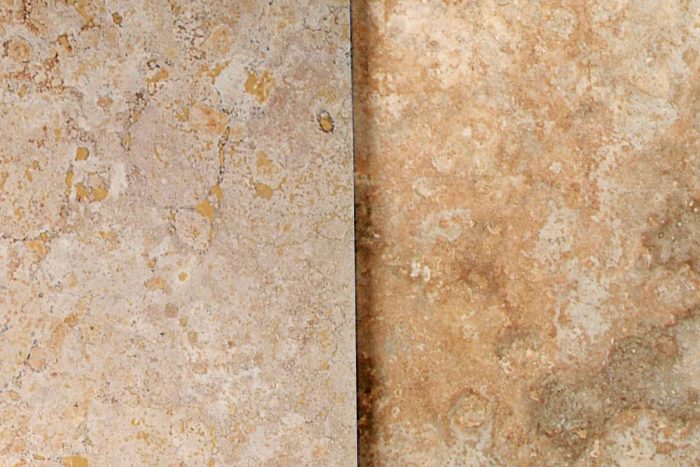
| TRADE SECRET: A grout-filled travertine tile floor will eventually develop small holes in its surface. This is due to surface wearing, which exposes additional pores and cavities. This is normal. The holes can be filled with grout or left alone, to resemble a floor in an ancient Italian villa. |
Limestone
Limestone is a naturally light stone, in colors ranging from beige to blue to gray. Some limestones show only mild shade variation from tile to tile; others display extreme variation (see “Variations in Natural Stone”). The hardness of the limestone depends on where it was quarried. Limestone lacks travertine’s characteristic pits and depressions, but some varieties show interesting features, including seashells and fossils. All stone tiles require maintenance, but most limestones require a bit more attention due to their susceptibility to staining and scratching. Limestone is not the best wearing tile, so avoid its use in high-traffic areas such as entries and kitchens.

Slate
Slate is a natural stone found in a variety of earth tones, depending on its place of origin (India, China, Africa). Slate tiles come in two forms: “Calibrated” tiles are machine ground flat on both sides; “gauged” tiles are ground on the bottom, but the upper side is left with a natural, irregular surface. Often used on floors and sometimes on countertops, gauged slate tiles can elicit a rustic, outdoorsy look (it does have a tendency to “shed” very small pieces of stone over time, but this does not have an effect on the longevity of the installation). Conversely, calibrated slate can be used effectively in modern, minimalist decors. If you plan to use slate on a high-traffic floor, be sure to buy a high-quality slate (don’t buy the bargain tile at 99¢ per square foot).
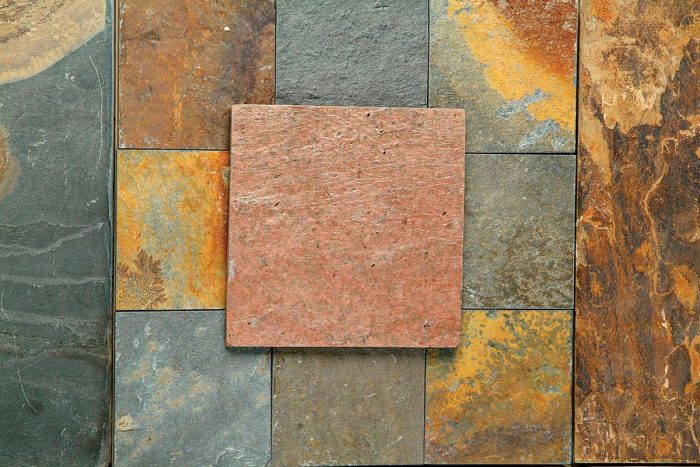
Granite
One of the hardest natural stone materials you can find in the form of tile, granite has a wide range of colors, including grays, greens, reds, browns, and blacks. Granite tiles often have characteristic crystal-like features and veining, which can vary considerably from tile to tile. Highly resistant to scratches and stains, it is a good choice for floors and high-wear surfaces. However, if used on kitchen counters, granite tiles must be sealed to prevent food oils and fats from penetrating the surface and leaving blotchy stains.
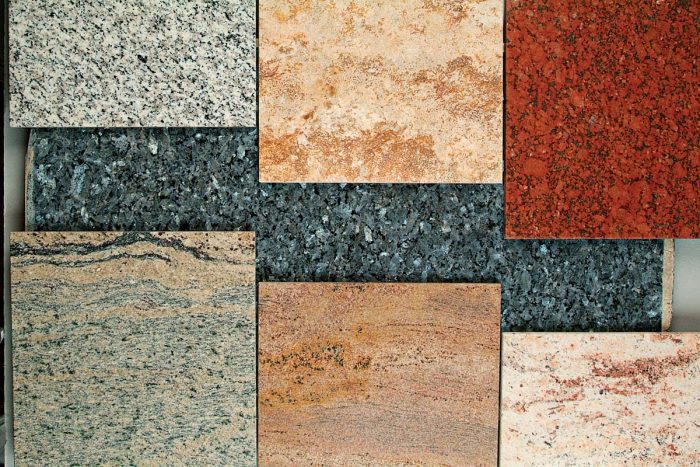
| Variations in Natural Stone
Stone tiles can vary considerably from one to the other. To help you visualize how variations in a particular kind of stone’s color and pattern will look across your entire counter or floor, take a single tile and divide it into a grid of squares using narrow tape (available from an art supply store). Imagine that each small square represents an individual tile, and you’ll get a preview of how an installation’s worth of full-size tiles might look. If you don’t like what you see, you probably won’t want to choose that tile for your project. |
 Excerpted from Tiling Complete, 2nd Edition by Robin Nicholas and Michael Schweit.
Excerpted from Tiling Complete, 2nd Edition by Robin Nicholas and Michael Schweit.
Available in the Taunton Store and at Amazon.com.

